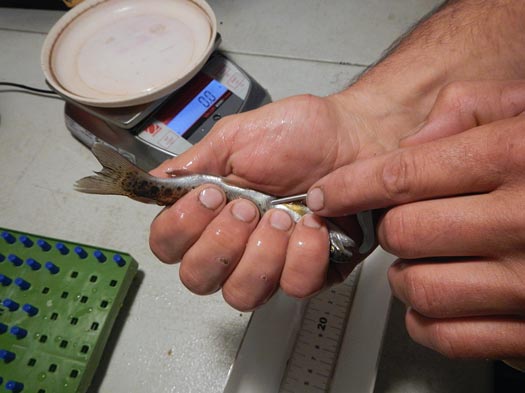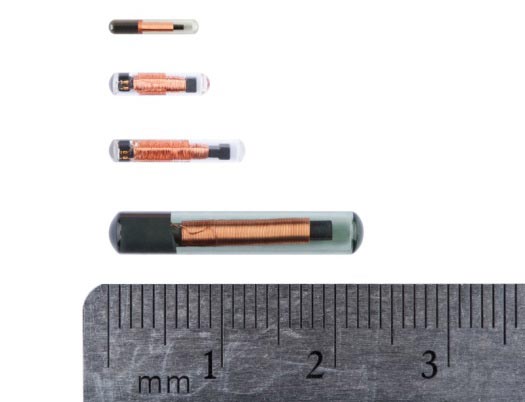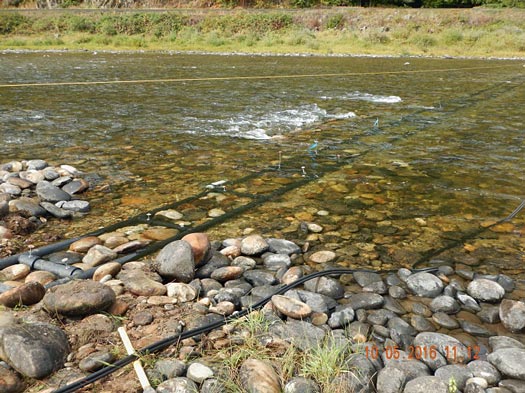
By Marika Dobos
The PIT (passive integrated transponders) tag is a wonderful little tool that allows fish managers and biologists to understand things about fish that were once very difficult to determine. By PIT tagging anadromous fishes such as salmon and steelhead early in their life, we can now easily assess their survival as they migrate to the ocean and back and understand other things such as when and how many fish are returning, where they a returning to, and how old they are. The reason we can do this is because we now have arrays (antennas) on many of the dams on the Columbia and Snake rivers and their tributary streams that can document when these PIT tagged fish swim by. As you can imagine, this type of information is very valuable to managers when determining when to open fishing seasons, how many fish can be harvested, and the status of wild runs.

Surprisingly, PIT tag technology has not changed much since 1984 when NOAA Fisheries first initiated their use to investigate large scale movement patterns of salmon and steelhead smolts. A PIT tag consists of a microchip, chip-capacitor, and antenna all encapsulate in a glass capsule, some of which are not much larger than a grain of rice. Each tag has a unique code with letters and numbers that are used to identify individual fish. A PIT tag gets powered by the magnetic field of an antenna once the tag is within range. This means that PIT tags do not require an internal battery for power and is why they can be made so small. Once a PIT tag is energized by the antenna’s magnetic field, the tag emits its own magnetic field allowing the tag’s code to be rapidly uploaded by the antenna. When first developed, a PIT tag had to have been within 7 inches of an antenna and moving past at less than 12 feet per second to be detected. Now, with advances in technology in PIT tags and antenna systems, multiple tags can be detected and decoded simultaneously at distances up to 40 inches and moving by at speeds up to 16 feet per second.

The use of PIT tags in fishery studies continues to expand as the number of fish being tagged and areas where they can be detected increases. From 1987 through 2008, 21.6 million salmon and steelhead juveniles were tagged and released in the Columbia River basin with an estimate of at least 2 million additional fish tagged each year since. There are currently 266 interrogation antenna sites in the Columbia River basin where PIT-tagged fish can be passively detected, two of which were newly implemented in the Selway and Lochsa rivers this year. Information on PIT tags are collected and analyzed by 32 groups from 8 entities including federal, state, tribal, and academic institutions. The PIT TAG Work Group was first established in 1987 to collaborate among all groups and develop a central database to ensure that methods were standardized and information was accurate and available to all interest groups. Most of the information can now be accessed by all through the Columbia Basin PIT Tag Information System (PTAGIS; http://ptagis.org). The immense and complex database houses all of the tagging and detection history for all tagged salmon and steelhead in the Columbia River basin which can be used for answering a variety of scientific questions about their life history across time.

The use of PIT tags is one of the most established methods for studying anadromous fish species. Essentially, few modifications have occurred to improve the technology to where it is today. The success of being able to use PIT tags to answer questions about fish heavily relies on the remarkable cooperation amongst so many different groups. Each group has their own objectives and questions but work collaboratively to standardize the collection and entry of data and provide complete access by any who wish to explore them. With streamlined advancements in the PTAGIS database, information can be used immediately after being entered, and large sub-datasets can be extracted for analysis in real-time. Because of this, PIT-tag technology is an extremely powerful tool for basin-wide assessment and management of salmon and steelhead.
References: Marvin, D. P. 2012. The success of the Columbia Basin passive integrated transponder (PIT) tag information system. Pages 95‒134 in J. R. McKenzie, B. Parsons, A. C. Seitz, R. K. Kopf, M. Mesa, and Q. Phelps, editors. Advances in fish tagging and marking technology. American Fisheries Society, Symposium 76, Bethesda, Maryland.

